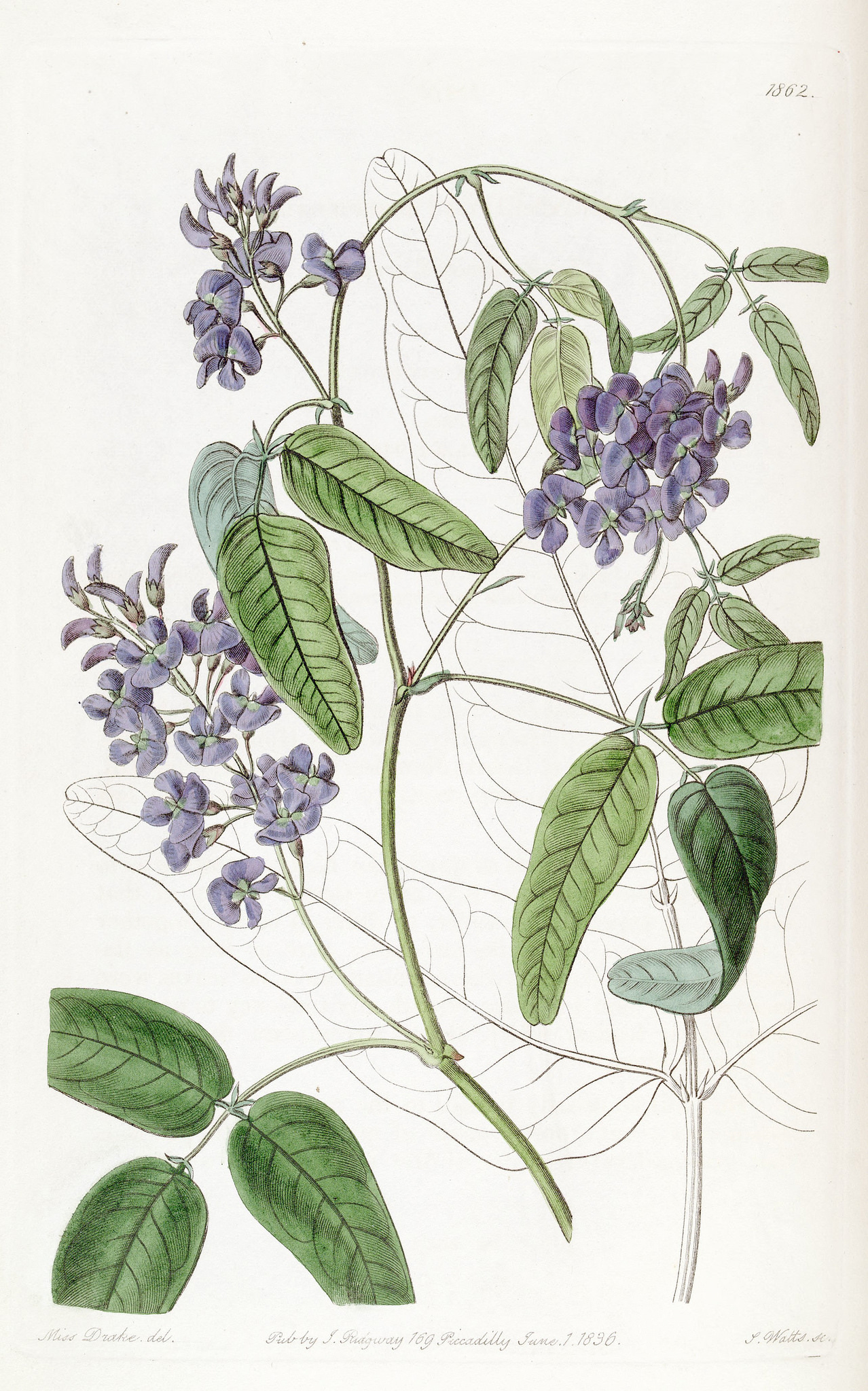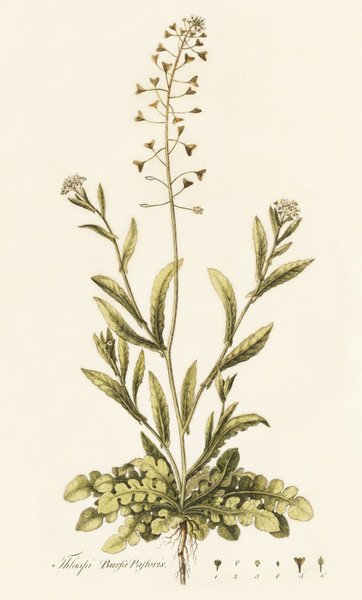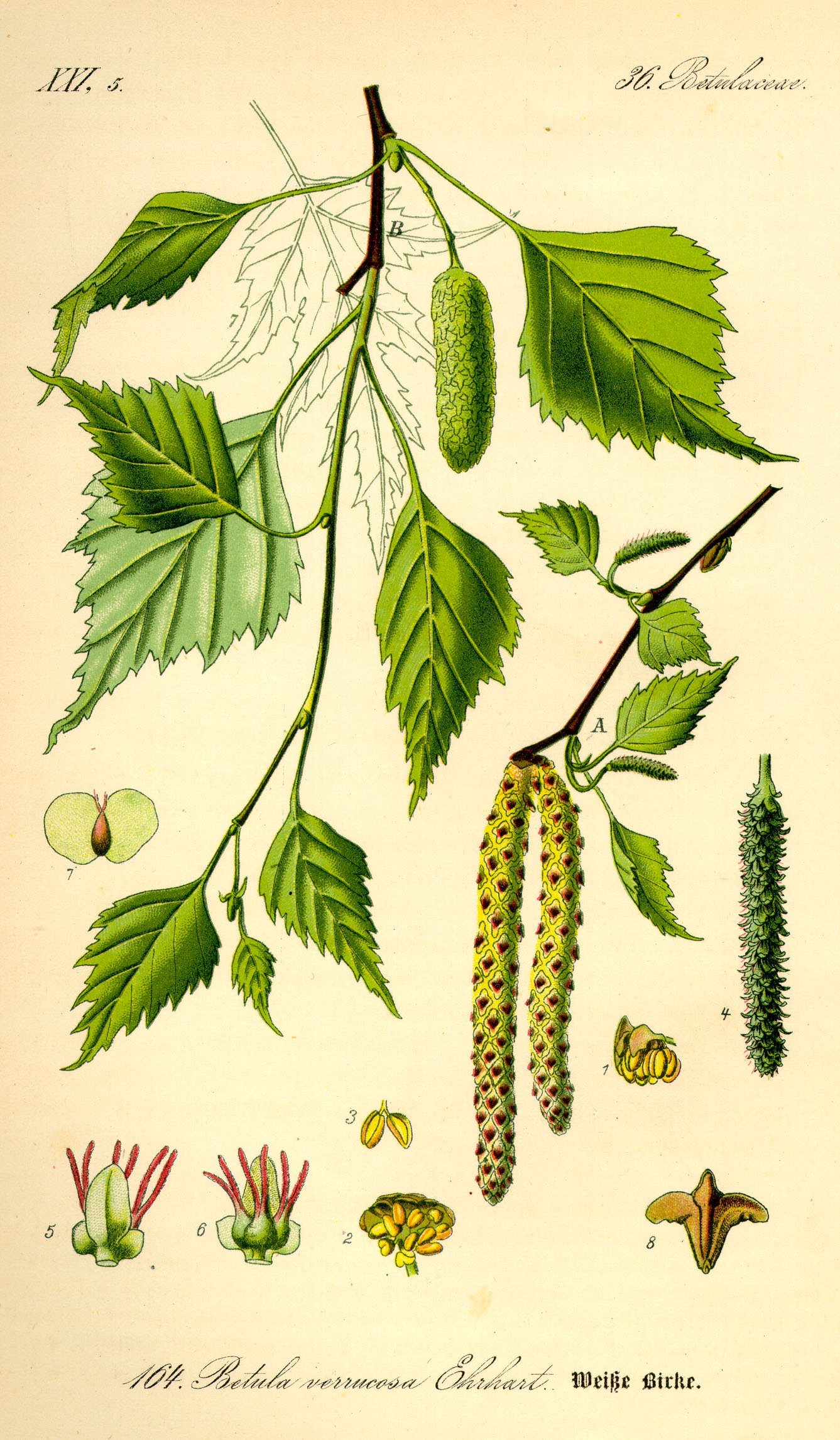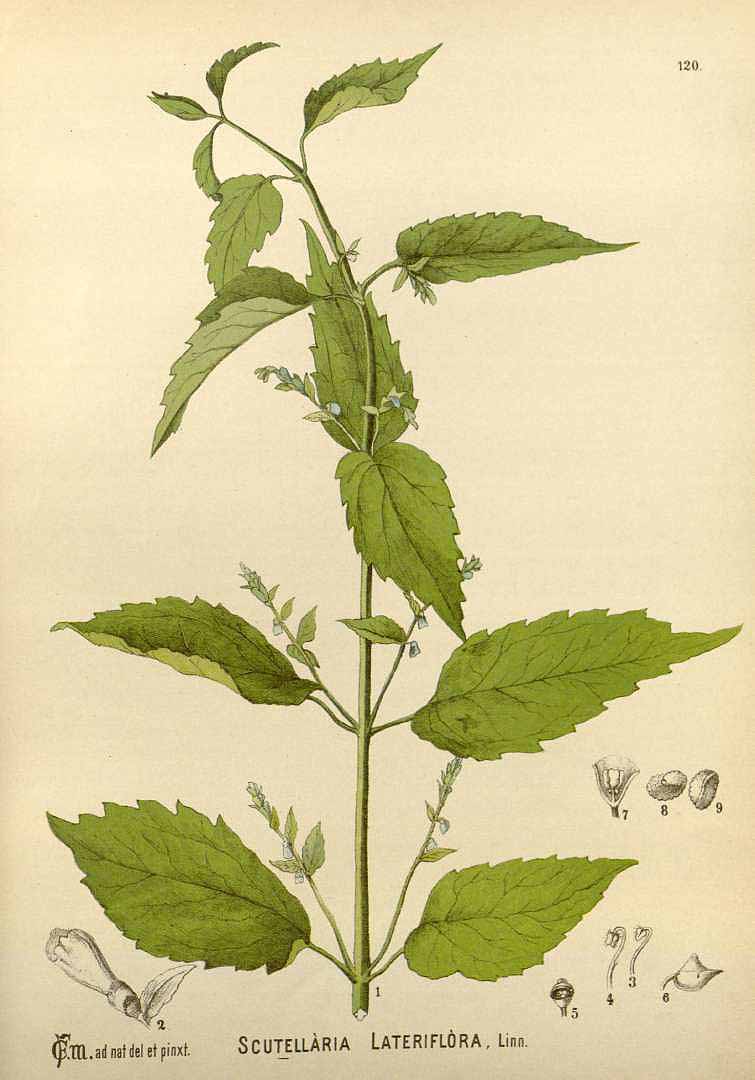Dr Clare Materia Medica
Introduction to the Dispensing of Dr Clare’s Blended Herbs
Special | A | B | C | D | E | F | G | H | I | J | K | L | M | N | O | P | Q | R | S | T | U | V | W | X | Y | Z | ALL
S |
|---|
Sarsaparilla
Smilax. Scientific Name: Smilax ornata; Smilax officinalis. Family: Smilacaceae. People Use This For: Sarsaparilla is used for psoriasis and other skin diseases, sweat inducer. Sarsaparilla is also used as an adjunct for treating leprosy and for syphilis. Mexican and Honduran sarsaparilla are used for treating gonorrhea, fevers, and digestive disorders. In manufacturing, sarsaparilla is used as a flavoring agent in foods, beverages, and pharmaceuticals. Mechanism of Action: The applicable part of sarsaparilla is the root. Sarsaparilla is thought to have antirheumatic, antiseptic, and antipruritic activity;52 however, these effects have not been substantiated. Sarsaparilla contains about 2% saponins and other varied constituents, including quercetin and phytosterols. The saponin constituents53,52,54,55 may have diuretic, sweat inducing, expectorant, and laxative effects.54 Sarsaparilla may improve appetite and digestion52 and its extracts may improve psoriasis symptoms.52 Preliminary evidence suggests that sarsaparilla may have hepato-protective and anti-inflammatory activity.52 Adverse Reactions: None reported in therapeutic doses. Interactions with Herbs & Supplements: None reported. Interactions with Drugs: None reported. Interactions with Foods: None known. Interactions with Lab Tests: None known. Dosage/Administration: Dr Clare’s Blends: 1 gm per day. Oral: The typical oral dose of sarsaparilla is 1-4 grams of the dried root or one cup of the tea three times daily.52 Specific References: SARSAPARILLA 50. FDA. Center for Food Safety and Applied Nutrition, Office of Premarket Approval, EAFUS: A food additive database. Available at: vm.cfsan.fda.gov/~dms/eafus.html. 51. McGuffin M, Hobbs C, Upton R, Goldberg A, eds. American Herbal Products Association's Botanical Safety Handbook. Boca Raton, FL: CRC Press, LLC 1997. 52. Newall CA, Anderson LA, Philpson JD. Herbal Medicine: A Guide for Healthcare Professionals. London, UK: The Pharmaceutical Press, 1996. 53. Tyler VE. Herbs of Choice. Binghamton, NY: Pharmaceutical Products Press, 1994. 54. Foster S, Tyler VE. Tyler's Honest Herbal: A Sensible Guide to the Use of Herbs and Related Remedies. 3rd ed., Binghamton, NY: Haworth Herbal Press, 1993. 55. Leung AY, Foster S. Encyclopedia of Common Natural Ingredients Used in Food, Drugs and Cosmetics. 2nd ed. New York, NY: John Wiley & Sons, 1996. Safety: No concerns regarding safety when used orally in amounts commonly found in foods. Sarsaparilla has Generally Recognized As Safe status (GRAS) for use in foods in the US.50 No concerns regarding safety when used orally and appropriately for medicinal purposes51 no evidence of harm. Pregnancy and Lactation: Refer to a Medical Herbalist. Effectiveness: There is insufficient scientific information available about the effectiveness of sarsaparilla. | |
Shepherd’s Purse
Scientific Name: People Use This For: Safety: Effectiveness: Mechanism of Action: Adverse Reactions: Interactions with Herbs & Supplements: Interactions with Drugs: Interactions with Foods: Interactions with Lab Tests: Interactions with Diseases or Conditions: Dosage/Administration: Specific References: Shepherd’s Purse | |
Siberian Ginseng
Eleuthero Ginseng, Eleutherococcus, Éleuthérocoque, Ginseng, Scientific Name: Eleutherococcus senticosus. Family: Araliaceae. People Use This For: Siberian ginseng is used as an adaptogen, for increasing resistance to environmental stress. It is also used orally for normalizing high or low blood pressure, insomnia, and increasing work capacity, chronic fatigue syndrome, diabetes, fibromyalgia, rheumatoid arthritis, influenza, swine flu, chronic bronchitis, improving athletic performance, reducing toxicity of chemotherapy, and symptomatic treatment of herpes simplex type II infections. It is also used orally as a general stimulant, diuretic, appetite stimulant, immune system stimulant, and for preventing colds and flu. Safety: No concerns regarding safety when used orally and appropriately, short-term. Siberian ginseng root extract has been used safely in clinical trials lasting up to 2 months.34,35,36,37,38,39 A specific combination product containing Siberian ginseng plus andrographis (Kan Jang, Swedish Herbal Institute) has also been safely used in multiple short-term clinical trials lasting 4-7 days.40,41,42,43,44,45,46 One clinical trial used this combination product in low doses for up to 3 months.47 There is insufficient scientific information available about the safety of Siberian ginseng when used long-term. There is no clinical evidence of adverse effects. Pregnancy and Lactation: Refer to a Medical Herbalist. Effectiveness: POSSIBLY EFFECTIVE Common cold. Some clinical research shows that taking a specific combination product containing Siberian ginseng plus andrographis (Kan Jang, Swedish Herbal Institute) orally significantly improves symptoms of the common cold when started within 72 hours of symptom onset. Some symptoms can improve after 2 days of treatment. It typically takes 4-5 days of treatment before there is maximal symptom relief.40,42,43,48,45,49 Some research suggests this combination of Siberian ginseng and andrographis relieves cold symptoms better than Echinacea or placebo in children.50 Herpes simplex virus type 2 (HSV-2). Taking a specific Siberian ginseng extract, standardized to contain eleutheroside 0.3% (Elagen), orally seems to reduce the frequency, severity, and duration of herpes simplex type II infections.34,35 POSSIBLY INEFFECTIVE Athletic performance. Taking Siberian ginseng orally doesn't seem to increase speed, quality, and capacity for physical work. A specific Siberian ginseng root liquid extract standardized to eleutherosides B and E content 3.4 mL daily doesn't seem to have any effect on endurance; performance; or psychological, cardiac, or respiratory parameters in trained distance runners.37,51 In trained endurance cyclists, Siberian ginseng 1200 mg per day (Endurox) doesn't seem to have any effect on glycogen, fat utilization, or cycling performance time.52 It also doesn't seem to improve respiration; reduce lactate production; or hasten heart rate recovery during stair-stepping exercise, treadmill, or cyclic ergometry.53,54,55 INSUFFICIENT SCIENTIFIC EVIDENCE to RATE Chronic fatigue syndrome. Taking Siberian ginseng orally 2 grams/day for 2 months does not reduce symptoms of chronic fatigue syndrome to the extent of clinical significance.38 Cognitive performance. There is preliminary evidence that suggests Siberian ginseng might improve memory and feelings of well-being in middle-aged people.36 Familial Mediterranean fever. Preliminary clinical research suggests that a combination of Siberian ginseng, andrographis, schisandra, and licorice (ImmunoGuard, Inspired Nutritionals) reduces the duration, frequency, and severity of attacks of familial Mediterranean fever in children.56 Heart disease. There is preliminary evidence that suggests administering Siberian ginseng intravenously might be useful for hyperlipidemia, and arrhythmias.57,58 Influenza. Preliminary clinical research suggests that patients with influenza who take a specific combination product containing Siberian ginseng plus andrographis (Kan Jang, Swedish Herbal Institute) have symptom relief more quickly compared to patients taking amantadine. Patients who take this combination also seem to have a reduced risk of post-influenza complication such as sinusitis or bronchitis.44 Ischemic stroke. There is preliminary evidence that suggests administering Siberian ginseng intravenously might be useful for treating acute cerebral infarction.59 Quality of life. Preliminary clinical research shows that Siberian ginseng significantly improves social functioning and mental well-being in people over 65 years of age after 4 weeks of treatment; however, this was not maintained after 8 weeks of treatment.39 More evidence is needed to rate Siberian ginseng for these uses. Mechanism of Action: The applicable parts of Siberian ginseng are the root and leaf. The root, which is most commonly used, contains active compounds referred to as eleutherosides A through M.60 Eleutheroside B (syringin) and eleutheroside E (syringaresinol) are the most plentiful and are used as marker compounds for Siberian ginseng products.61 The eleutherosides include a variety of diverse compounds including saponins (daucosterol, beta-sitosterol, hederasaponin B), coumarins (isofraxidin), lignans (sesamin, syringaresinol), phenylpropanoids (syringin, caffeic acid, sinapyl alcohol, coniferyl aldehyde, protocatechuic acid), betulinic acid, vitamin E, and provitamins like beta-carotene.60 Several constituents including syringin, syringoresinol, sesamin, beta sitosterol, caffeic acid, and coniferyl aldehyde are thought to have antioxidant and possible anticancer effects.60 In addition, there is some evidence that the constituent coniferyl aldehyde protects DNA against breakage caused by ultraviolet light.60 Siberian ginseng root extracts seem to have an antiproliferative effect on leukemia cells and appear to potentiate the effect of antimetabolites such as cytarabine.62 There's also preliminary evidence that suggests it might act as an antioxidant and prevent damage in ischemic stroke.59 Siberian ginseng root, the lignan constituent sesamin, and the phenylpropanoid syringin seem to have immunostimulatory effects.60 Siberian ginseng increases lymphocyte counts and phagocyte activity.63 Some eleutherosides have structural similarities to cardiac glycosides and can interfere with measurement of serum digoxin levels by some assay methods.64 There is no clinical evidence that Siberian ginseng has any of the pharmacological effects of cardiac glycosides. Siberian ginseng constituents have a variety of other pharmacological effects. Other constituents are also thought to be anti-inflammatory, sedative, diuretic, gonadotropic, estrogenic, protein-anabolic, and stimulate the pituitary-adrenocortical system.65 Siberian ginseng root extract seems to inhibit RNA-type viruses including human rhinovirus, respiratory syncytial virus (RSV), and influenza A virus, but has no effect on DNA viruses such as adenovirus or herpes simplex type 1 virus (HSV-1).66 Polysaccharide derivatives of Siberian ginseng appear to inhibit growth of the tuberculosis bacterium.67 Adverse Reactions: No adverse effects are expected if used as recommended.68 Interactions with Drugs: Digoxin (Lanoxin). Lithium. Interactions with Foods: None known. Interactions with Lab Tests: Digoxin Serum Assay: Siberian ginseng may interfere with some serum digoxin measurements. Dosage/Administration: Dr Clare’s Blend: 1 gm per day. 1-4gms daily Dr Clare’s Comment. An "Adaptogen" is a non-medical term used to suggest that a substance can act to strengthen the body and increase general resistance. It is often used to describe the activity of Siberian ginseng.60 Siberian ginseng is a completely different herb than American or Panax ginseng. Specific References: GINSENG, SIBERIAN 34. Williams M. Immuno-protection against herpes simplex type II infection by eleutherococcus root extract. Int J Altern Complem Med 1995;13:9-12. 35. Vogler BK, Pittler MH, Ernst E. The efficacy of ginseng. A systemic review of randomized clinical trials. Eur J Clin Pharmacol 1999;55:567-75. 36. Winther K, Ranlov C, Rein E, et al. Russian root (Siberian ginseng) improves cognitive functions in middle-aged people, whereas Ginkgo biloba seems effective only in the elderly. J Neurological Sci 1997;150:S90. 37. Dowling EA, Redondo DR, Branch JD, et al. Effect of Eleutherococcus senticosus on submaximal and maximal exercise performance. Med Sci Sports Exerc 1996;28:482-9. 38. Hartz AJ, Bentler S, Noyes R et al. Randomized controlled trial of Siberian ginseng for chronic fatigue. Psychol Med 2004;34:51-61. 39. Cicero AF, Derosa G, Brillante R, et al. Effects of Siberian ginseng (Eleutherococcus senticosus maxim.) on elderly quality of life: a randomized clinical trial. Arch Gerontol Geriatr Suppl 2004;9:69-73. 40. Caceres DD, Hancke JL, Burgos RA, et al. Use of visual analogue scale measurements (VAS) to assess the effectiveness of standardized Andrographis paniculata extract SHA-10 in reducing the symptoms of common cold. A randomized, double-blind, placebo study. Phytomedicine 1999;6:217-23. 41. Thamlikitkul V, Dechatiwongse T, Theerapong S, et al. Efficacy of Andrographis paniculata, Nees for pharyngotonsillitis in adults. J Med Assoc Thai 1991;74:437-42. 42. Melchior J, Palm S, Wikman G. Controlled clinical study of standardized Andrographis paniculata in common cold- a pilot trial. Phytomedicine 1996;97;3:315-8. 43. Hancke J, Burgos R, Caceres D, Wikman G. A double-blind study with a new monodrug Kan Jang: decrease of symptoms and improvement in the recovery from common colds. Phytotherapy Res 1995;9:559-62. 44. Kulichenko LL, Kireyeva LV, Malyshkina EN, Wikman G. A Randomized, Controlled Study of Kan Jang versus Amantadine in the Treatment of Influenza in Volgograd. J Herb Pharmacother 2003;3:77-92. 45. Gabrielian ES, Shukarian AK, Goukasova GI, et al. A double blind, placebo-controlled study of Andrographis paniculata fixed combination Kan Jang in the treatment of acute upper respiratory tract infections including sinusitis. Phytomedicine 2002;9:589-97. 46. Coon JT, Ernst E. Andrographis paniculata in the treatment of upper respiratory tract infections: a systematic review of safety and efficacy. Planta Med 2004;70:293-8. 47. Caceres DD, Hancke JL, Burgos RA, Wikman GK. Prevention of common colds with Andrographis Paniculata dried extract: a pilot, double-blind trial. Phytomedicine 1997;4:101-4. 48. Melchoir J, Spasov AA, Ostrovskij OV, et al. Double-blind, placebo-controlled pilot and phase III study of activity of standardized Andrographis paniculata Herba Nees extract fixed combination (Kan Jang) in the treatment of uncomplicated upper-respiratory tract infection. Phytomedicine 2000;7:341-50. 49. Poolsup N, Suthisisang C, Prathanturarug S, et al. Andrographis paniculata in the symptomatic treatment of uncomplicated upper respiratory tract infection: systematic review of randomized controlled trials. J Clin Pharm Ther 2004;29:37-45. 50. Spasov AA, Ostrovskij OV, Chernikov MV, Wikman G. Comparative controlled study of Andrographis paniculata fixed combination, Kan Jang and an Echinacea preparation as adjuvant, in the treatment of uncomplicated respiratory disease in children. Phytother Res 2004;18:47-53. 51. Asano K, Takahashi T, Miyashita M, et al. Effect of Eleutherococcus senticosus extract on human physical working capacity. Planta Med 1986;175-7. 52. Eschbach LF, Webster MJ, Boyd JC, et al. The effect of siberian ginseng (Eleutherococcus senticosus) on substrate utilization and performance. Int J Sport Nutr Exerc Metab 2000;10:444-51. 53. Dusman K, Plowman SA, McCarthy K, et al. The effects of Endurox on the physiological responses to stair-stepping exercise. Med Sci Sports Exerc 1998;30 Suppl:S323. 54. Cheuvroni SN, Moffatt RF, Biggerstaff KD, et al. Effects of Endurox on various metabolic responses to exercise. Med Sci Sports Exerc 1998;30 Suppl:S32. 55. Smerzer KD, Gretebeck PJ. Effect of radix Acanthopanax senticosus on submaximal running peformance. Med Sci Sports Excerc 1998;30 Suppl:S278. 56. Amaryan G, Astvatsatryan V, Gabrielyan E, et al. Double-blind, placebo-controlled, randomized, pilot clinical trial of ImmunoGuard--a standardized fixed combination of Andrographis paniculata Nees, with Eleutherococcus senticosus Maxim, Schizandra chinensis Bail. and Glycyrrhiza glabra L. extracts in patients with Familial Mediterranean Fever. Phytomedicine 2003;10:271-85. 57. Shang SY, Ma YS, Wang SS. [Effect of eleutherosides on ventricular late potential with coronary heart disease and myocarditis]. [Article in Chinese] Zhong Xi Yi Jie He Za Zhi 1991;11:280-1, 261. 58. Shi Z, Liu C, Li R. [Effect of a mixture of Acanthopanax senticosus and Elsholtzia splendens on serum-lipids in patients with hyperlipemia]. [Article in Chinese]. Zhong Xi Yi Jie He Za Zhi 1990r;10:155-6, 132. 59. Han L, Cai D. [Clinical and experimental study on treatment of acute cerebral infarction with Acanthopanax Injection]. [Article in Chinese]. Zhongguo Zhong Xi Yi Jie He Za Zhi 1998;18:472-4. 60. Davydov M, Krikorian AD. Eleutherococcus senticosus (Rupr. & Maxim.) Maxim. (Araliaceae) as an adaptogen: a closer look. J Ethnopharmacol 2000;72:345-93. 61. Harkey MR, Henderson GL, Gershwin ME, et al. Variability in commercial ginseng products: an analysis of 25 preparations. Am J Clin Nutr 2001;73:1101-6. 62. Hacker B, Medon PJ. Cytotoxic effects of Eleutherococcus senticosus aqueous extracts in combination with N6-(delta 2-isopentenyl)-adenosine and 1-beta-D-arabinofuranosylcytosine against L1210 leukemia cells. J Pharm Sci 1984;73:270-2. 63. Szolomicki S, Samochowiec L, Wojcicki J, Drozdzik M. The influence of active components of Eleutherococcus senticosus on cellular defense and physical fitness in man. Phytother Res 2000;14:30-5. 64. Dasgupta A, Wu S, Actor J, et al. Effect of Asian and Siberian ginseng on serum digoxin measurement by five digoxin immunoassays. Significant variation in digoxin-like immunoreactivity among commercial ginsengs. Am J Clin Pathol 2003;119:298-303. 65. Medon PJ, Ferguson PW, Watson CF. Effects of Eleutherococcus senticosus extracts on hexobarbital metabolism in vivo and in vitro. J Ethnopharmacol 1984;10:235-41. 66. Glatthaar-Saalmuller B, Sacher F, Esperester A. Antiviral activity of an extract derived from roots of Eleutherococcus senticosus. Antiviral Res 2001;50:223-8. 67. Shen ML, Zhai SK, Chen HL, Immunomopharmacological effects of polysaccharides from Acanthopanax senticosus on experimental animals. Int J Immunopharmacol 1991;13:549-54. 68. Mills S, Bone K. Principles and Practice of Phytotherapy. London: Churchill Livingstone, 2000. | |
Silver Birch
Scientific name:Betula pendula, Betula alba. Botanical family: Betulaceae. Parts used: The leaves and bark. Traditional use. Birch is used as a diuretic, for rheumatic ailments, for cystitis, for arthritis, rheumatism and as an alterative for aiding eliminatory processes. Safety. There are no safety concerns when used within the recommended dosages.1 Pregnancy: Consult with a medical herbalist. Breastfeeding: Consult with a medical herbalist. Constituents. Flavonoids; mainly hyperoside, luteolin and quercetin. Caffeic acid derivatives, including chlorogenic acid. Monoterpene glucosides; the betula albosides and roseoside. Saponins; betula triterpenes. Volatile oil containing betulin, caryophyllenes and methyl salicylate. Betulenols and their acetates. Anthocyanins. Resin; Tannins. Scientific evidence. No clinical research has been done. Mechanism of action. A study offers a rational basis for the use of Betula pendula leaf extract for the treatment of immune disorders, like rheumatoid arthritis, by diminishing proliferating inflammatory lymphocytes.5 The aquaretic and possibly saluretic (loss of salt through the kidneys) effects are due to the flavonoid constituents of the birch leaf. Aquaretics increase urine volume (water loss) but not electrolyte excretion.2 The high vitamin C content of the leaf can enhance the effect.3 An extract of betulinic acid may hold promise as an anticancer agent. Some laboratory and animal studies of betulinic acid have reported antitumor activity. Additional studies are under way to find out whether it has a role in treating several forms of cancer, including melanoma and certain brain cancers. Clinical trials are needed to determine what effect, if any, betulinic acid may have in treating cancer in humans.6,7,8,9,10,11,12 Adverse reactions. None reported. Interactions with herbs and supplements: None known. Interactions with drugs: None known. Interactions with foods: None known. Interactions with laboratory tests: None known. Dosage. Recommended dose: 3-10mls per day 1:5 tincture 30% alcohol. Infusion: range from 2-3tsps. per day. The recommended dose of Dr Clare’s Joint Support Blend provides 3mls per day of 1:3 Tincture in 15mls daily, at a dose of 5mls three times a day. This is equivalent to 375-750mgs per day. Dr Clare’s Joint Cleansing Tea provides ½ tsp. per day of peppermint. Dosage. Dr Clare’s Blends: 700mgs per day. Oral: The typical dose of birch leaf is several times daily as a tea, which is prepared by steeping 2-3 grams of finely cut dried leaf in approximately 150 mL boiling water for 10-15 minutes and straining.4,3 The tea should be taken with plenty of water.3 References. 1. McGuffin M, Hobbs C, Upton R, Goldberg A, eds. American Herbal Products Association's Botanical Safety Handbook. Boca Raton, FL: CRC Press, LLC 1997. 2. Robbers JE, Tyler VE. Tyler's Herbs of Choice: The Therapeutic Use of Phytomedicinals. New York, NY: The Haworth Herbal Press, 1999. 3. Wichtl MW. Herbal Drugs and Phytopharmaceuticals. Ed. N.M. Bisset. Stuttgart: Medpharm GmbH Scientific Publishers, 1994. 4. Blumenthal M, ed. The Complete German Commission E Monographs: Therapeutic Guide to Herbal Medicines. Trans. S. Klein. Boston, MA: American Botanical Council, 1998. 5. Gründemann C1, Gruber CW, Hertrampf A, Zehl M, Kopp B, Huber R. J Ethnopharmacol. 2011 Jul 14;136(3):444-51. An aqueous birch leaf extract of Betula pendula inhibits the growth and cell division of inflammatory lymphocytes. 6. Chintharlapalli S, Papineni S, Ramaiah SK, Safe S. Betulinic acid inhibits prostate cancer growth through inhibition of specificity protein transcription factors. Cancer Res. 2007;67:2816-2823. 7. Eiznhamer DA, Xu ZQ. Betulinic acid: a promising anticancer candidate. IDrugs. 2004;7:359-373. 8. Jung GR, Kim KJ, Choi CH, et al. Effect of betulinic acid on anticancer drug-resistant colon cancer cells. Basic Clin Pharmacol Toxicol. 2007;101:277-285 9. Pisha E, Chai H, Lee IS, et al. Discovery of betulinic acid as a selective inhibitor of human melanoma that functions by induction of apoptosis. Nat Med. 1995;1:1046-1051. 10. Sawada N, Kataoka K, Kondo K, et al. Betulinic acid augments the inhibitory effects of vincristine on growth and lung metastasis of B16F10 melanoma cells in mice. Br J Cancer. 2004;90:1672-1678. 11. Schmidt ML, Kuzmanoff KL, Ling-Indeck L, Pezzuto JM. Betulinic acid induces apoptosis in human neuroblastoma cell lines. Eur J Cancer. 1997;33:2007-2010. 12. Thurnher D, Turhani D, Pelzmann M, et al. Betulinic acid: a new cytotoxic compound against malignant head and neck cancer cells. Head Neck. 2003;25:732-740. | |
Skullcap
American Skullcap, Blue Pimpernel, Blue Skullcap, Escutelaria, Helmet Flower, Scutellaria. Scientific Name: Scutellaria lateriflora. Family: Lamiaceae/Labiatae.
People Use This For: Skullcap is used for insomnia, anxiety, nervous tension, allergies, dermatitis, inflammation, and spasms.
Safety: There is insufficient scientific information available about the use of skullcap.
Pregnancy and Lactation: Refer to a Medical Herbalist.
Effectiveness: INSUFFICIENT RELIABLE EVIDENCE to RATE Anxiety. Preliminary evidence suggests that healthy people who take a single dose of skullcap extract might feel more relaxed than tense. This effect appears to last for about 2 hours.41 But it is not known if taking skullcap is effective for anxiety disorders or if extended use is beneficial. More scientific evidence is needed to rate skullcap for this use.
Mechanism of Action: The applicable parts of skullcap are the above ground parts. The principle flavonoids of skullcap are baicalin and wogonin.42,41 Skullcap also contains lignins, resins, tannins, and volatile oils.42 It is thought that the flavonoid constituents of skullcap might act as GABA agonists and therefore have a sedating and anxiolytic effect.41
Constituents of skullcap seem to bind the serotonin receptor 5-HT7. But it's not known if these constituents have agonist or antagonist properties on the receptor.42 Skullcap's effects on the serotonin receptor may be involved in potential sedative properties.
Adverse Reactions: Orally, single doses of skullcap extract appear to be well-tolerated. A single skullcap extract dose of 100 mg does not seem to affect cognition or cause significant sedation. But a higher dose of 200 mg might cause more sedation and cognitive impairment.41 The effect of these typical doses in repeated doses is not known.
Interactions with Herbs & Supplements: Herbs and Supplements with Sedative Properties: Theoretically, concomitant use with herbs that have sedative properties might enhance therapeutic and adverse effects.
Interactions with Drugs: None known.
Interactions with Foods: None known.
Interactions with Lab Tests: None known.
Interactions with Diseases or Conditions: None known. Dosage/Administration: Dr Clare’s Blends: 1 gm per day
Oral: A typical dose is 1-2 grams or as a tea three times daily.43 The extract is typically used 2-4 mL (1:1 in 25% alcohol) three times daily. The tincture is typically used 3-6 mL (1:5 in 45% alcohol).43
Specific References: SKULLCAP 41. Wolfson P, Hoffmann DL. An investigation into the efficacy of Scutellaria lateriflora in healthy volunteers. Altern Ther Health Med 2003;9:74-8. 42. Gafner S, Bergeron C, Batcha LL, et al. Inhibitor of [3H]-LSD binding to 5-HT7 receptors by flavonoids from Scutellaria lateriflora. J Nat Prod 2003;66:535-7. 43. Newall CA, Anderson LA, Philpson JD. Herbal Medicine: A Guide for Healthcare Professionals. London, UK: The Pharmaceutical Press, 1996.
| |
Slippery ElmSlippery Elm | |

 Also Known As:
Also Known As: Also Known As:
Also Known As: Also Known As:
Also Known As: Also known as:Betula, Betulae folium, Silver Birch, White Birch.
Also known as:Betula, Betulae folium, Silver Birch, White Birch. Also Known As:
Also Known As: